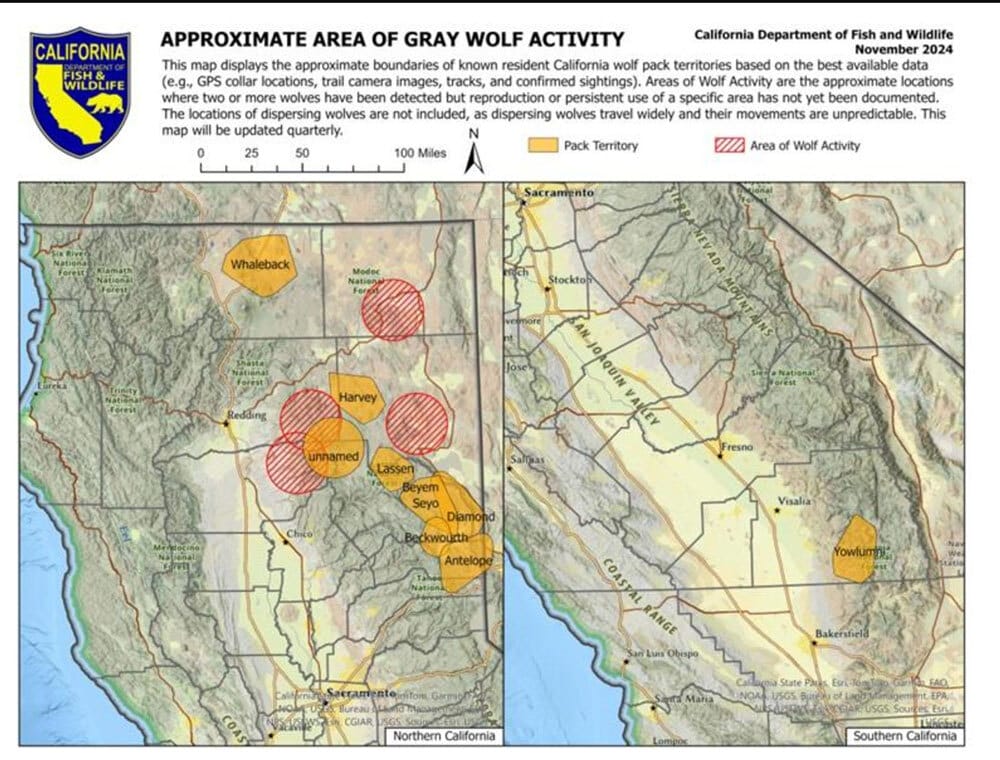
CDFW
Earlier this month, California officials announced the discovery of the “Diamond Pack” marking the ninth known wolf pack and the third new pack in the Golden State this year.
Experiencing explosive growth, at least as it pertains to gray wolves, California has a lot to celebrate, depending on who you are. For wolf advocates, the announcement that marks the largest single-year population increase in 100 years is music to their ears. For those that enjoy hunting or ranching, on the other hand, the news isn’t all that welcome. With fourteen wolf depredations on livestock recorded since August, California’s Cattleman’s Association wants to ensure the public understands how this affects their industry.
“Obviously we don’t want to undercut that wolves are a conservation success,” Kirk Wilbur, vice president of government affairs for the California Cattlemen’s Association, said. “But it’s important for people to know that as the population [of wolves] increases, we see a similar increase in the rate that cattle, sheep and other animals are killed by those wolves.”

CDFW
In addition to the Diamond Pack, the state officially identified the Antelope Pack, which also calls the Sierra Nevada Valley home, along with another pack located in the Lassen National Forest, which has yet to be named.
With 30 new pups this year alone, the growth of the gray wolf in California remains a success story of sorts considering the animals were extirpated from the Golden State in the 1920s. Since then, migrated wolves from Oregon have been doing their part to repopulate and create new packs as we’ve seen so far this year.
While the gray wolf remains protected under both state and federal law in California, there is a delicate balance at play. As many biologists are hopeful that the newly-established packs help reduce coyote populations and adequately balance deer populations, the issues surrounding how fruitful that will be, along with the effects on livestock producers remains to be seen.

